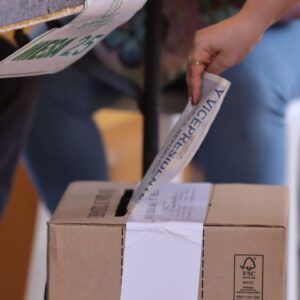The disruption of Technology in Latin American Schools.
Access to a globalized world has broken the mold of the education sector in Latin America. The current model of instruction, standardized and monolithic, establishes its focus on simplicity, convenience and homogeneity, characteristics that do not fit the needs of the 21st century student.
Today schools in Colombia must transform their pedagogical models through disruptive instructional techniques that offer differentiating services, tailored to each student, that understand their desire for personalization, to have access to unique learning opportunities and that in turn, they are economically viable. These should contemplate the transformation of traditional spaces, by digital ecosystems that reflect a culture focused on innovation and development, with its focus on heterogeneity. This need starts a new way of doing things in schools worldwide that is known as blended learning.
In simple terms, blended learning combines traditional teacher-student instruction with on-line instruction supported by technology. The internet becomes the catalyst that allows the empowerment of the student with their learning process. Being centered on the student, this happens to be personalized and based on competences. It allows for flexibility in the pace of learning, the place, and even the path; auditory, visual or kinesthetic. In this way, the student establishes their goals, generating a sense of responsibility and empowerment of their learning process and their needs. Traditional physical spaces in schools also undergo a transformation. Single-person desks are replaced by work desks that foster collaboration and teamwork. The connectivity, bandwidth, content control equipment, access points and other equipment required to have a support infrastructure, begin to make part of the investment budget of schools. BYOD (Bring Your Own Device) campaigns are developed by encouraging the student to bring their own device that allows them to access the digital world. The current blended learning is so strong that even the avant-garde schools have already modified their PEI (Institutional Educational Plan) so that it is inclusive and responds to situations and needs of the students, the local community, the region and the country.
But how does an example of a learning environment work under the blended learning model? Simple. As a first step, both the online and in-person components must go hand in hand. The teacher first defines the objective of the subject, then the student has the freedom to study the subject through learning platforms, viewing webinars, consulting curated pages, video playlists on YouTube; at its most convenient time and in its place of preference. The teacher receives data through interactive learning platforms, assessment or assessment applications such as Google Forms or through gamification, which corresponds to the use of design elements of games, thinking and mechanics using applications such as Quizizz or Kahoot. In this way, the teacher makes decisions based on data, aimed at redirecting, reinforcing and monitoring the learning process of each student. The physical classroom is transformed: from a traditional classroom to one divided with work tables or stations, where small groups of students work collectively on different topics, but towards the same goal.
The role of the teacher migrates from being a transmitter of knowledge to a counselor or sherpa: a term used to refer to the guides of Nepal who lived in the Himalayas; accompanying students in their journey along the mountain path of their learning. By having small stations, where students rotate every certain time, the teacher has the possibility of having closer proximity to the students, since he can attend 6 instead of 25 at a time. There are research stations, collaborative work, individual work and regular teaching time in front of the teacher. This allows the instruction to become personalized since the students find spaces of greater confidence where they can express themselves freely without any kind of preventions. In this way, they solve their doubts, reinforce their critical thinking, improve their collaborative and communication skills, becoming lifelong learners.
The extent of this technological disruption to the Colombian educational system transcends the barriers of the imagination. There are different models of blended learning: Rotation, Flex, A la Carte, Enriched Virtual (learn more). These allow educational institutions also to personalize their learning models, tailoring them to their measure and their needs. Nowadays we can even think about having teachers who dictate different subjects from their respective countries of origin, without needing to be in the physical school. This would not only allow Colombian schools to reduce their payroll and housing costs, but could also expand the reach of their academic curriculum, thus improving their promise of value, which impacts a greater number of students, different niches (multiculturalism) and the generation of differential business models.
We are in transformational times. This is why it is imperative that schools in Latin America take the first step towards the reform of their pedagogical strategy. The adjustments in the PEI must respond in the rhythm in which these trends change, so that the pedagogical models of the schools are updated and conform to the needs of an increasingly globalized world.
These disruptive technologies have broken the mold of traditionalism in the Latin American educational system; Through the cracks permeate the particular needs of each of our students, needs that do not give expectation: the change is imminent. The decision is to adapt or succumb.
REFERENCES
HORN, M., AND STAKER, H., (2015), BLENDED: USING DISRUPTIVE INNOVATION TO IMPROVE SCHOOLS, JOSEY-BASS, SAN FRANCISCO, USA
CLARK, H., AND AVRITH, T., (2015), THE GOOGLE INFUSED CLASSROOM, ED TECH TEAM PRESS,
IRVINE, CALIFORNIA, USA




